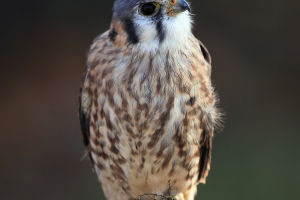Have you ever been captivated by a bird with a stunning crown of feathers? That's the hoopoe bird! It's as fascinating as its name suggests, with unique looks and behaviors that intrigue many. What makes the hoopoe so special?
From its distinctive crown to its curious habits, there's plenty to discover about this remarkable bird. Hoopoes aren't just beautiful; they're full of interesting facts.
Are you curious to explore the world of hoopoes and learn what makes them stand out? Let's delve into their captivating universe, where each fact is as amazing as the next!
1. What does the hoopoe look like?
a. African Hoopoe:
Appearance: Reddish-brown head and middle, with black tail and black-and-white striped wings.
Crown: Slicked straight back with black spots on feathers.
Beak: Very long and skinny.
b. European Hoopoe:
Appearance: Very light brown body with black tail and black-and-white striped wings.
Unique Feature: Small beard-like ruff under the beak.
Beak: Very long and skinny.
c. Madagascan Hoopoe:
Appearance: Similar to European Hoopoe but smaller in size.
Crown: Straight ruffle with black spots only at the top.
Beak: Long and skinny, but slightly shorter than African and European Hoopoes'.
2. How big is a hoopoe?
African Hoopoe:
Length: 10-11 inches (25-27 cm)
European Hoopoe:
Length: Between 9 and almost 13 inches (23-33 cm)
Madagascan Hoopoe
Length: Up to 12.6 inches (32 cm)
3. How much does a hoopoe weigh?
Hoopoe (general):
Weight: 56-87 grams (2-3.1 oz)
African Hoopoe:
Weight: 40-60 grams (1.4-2 oz)
Madagascan Hoopoe:
Weight: 57-91 grams (2-3 oz)
4. What is the hoopoe’s wingspan?
Wingspan: 17-19 inches (43-48 cm)
5. What is the hoopoes Latin name?
Here are the three hoopoe species along with their Latin names:
1. Upupa africana - African hoopoe
2. Upupa epops - Eurasian hoopoe
3. Upupa marginata - Madagascan hoopoe
6. How did the hoopoe get its name?
That's a fascinating detail about hoopoes! Their name is indeed derived from the sound of their call, which resembles a distinct "oop" sound. The combination of "upupa" from Latin and "epops" from Greek forms their scientific name, *Upupa epops*. It's quite interesting how their call is so integral to their name—it almost sounds like a punchline to a playful riddle: "upupa epops oop!"
7. Are hoopoes friendly? Or aggressive?
Hoopoes are usually harmless unless their nests are threatened, in which case they can defend themselves fiercely with their sharp beaks.
When facing other birds, hoopoes puff up their crown feathers to appear larger. Male hoopoes particularly raise their crests higher when feeling threatened.
Hoopoes are wild birds and typically avoid human interaction. Those living in areas where hoopoes reside can support them by providing suitable nesting sites.
These birds are generally solitary and independent, though they come together mainly for breeding and not for social interaction.
8. How long do hoopoes live?
The average lifespan of hoopoes is about 10 years.
9. What eats a hoopoe? Predators and threats.
The hoopoe faces predators like snakes and birds of prey, with snakes targeting abandoned nests for eggs. Foxes also prey on motherless chicks.
Despite appearing defenseless, hoopoe chicks have a surprising defense mechanism—they shoot liquid feces at predators like foxes. This unique ability gives them the nickname "stinkbird."
10. Are hoopoes endangered?
Currently, the hoopoe population is stable, estimated at around 10 million individuals. While there has been a slight decrease, it's not alarming.
The decline is mainly attributed to habitat loss, which has affected about 30% of their habitat over the last three generations.
Hungary, especially the Great Plains area, hosts a significant population of hoopoes. They were even honored as the "Bird of the Year" in 2015.
Lykkers, after exploring the captivating world of hoopoes, from their stunning appearances to their intriguing behaviors and unique adaptations, we hope you've gained a newfound appreciation for these remarkable birds. Did you find their defense tactics surprising? Or perhaps their distinctive crown feathers caught your eye?
Let's continue marveling at the wonders of nature together!


